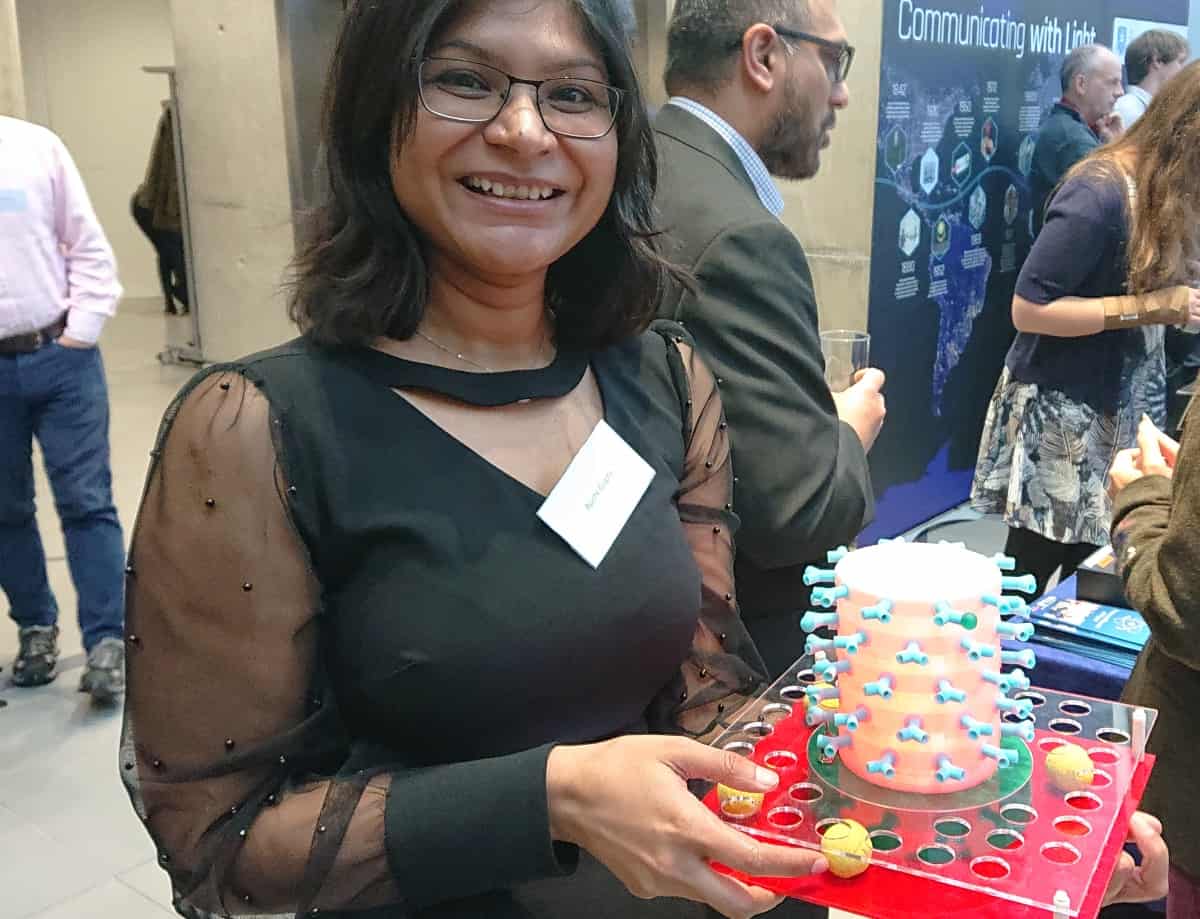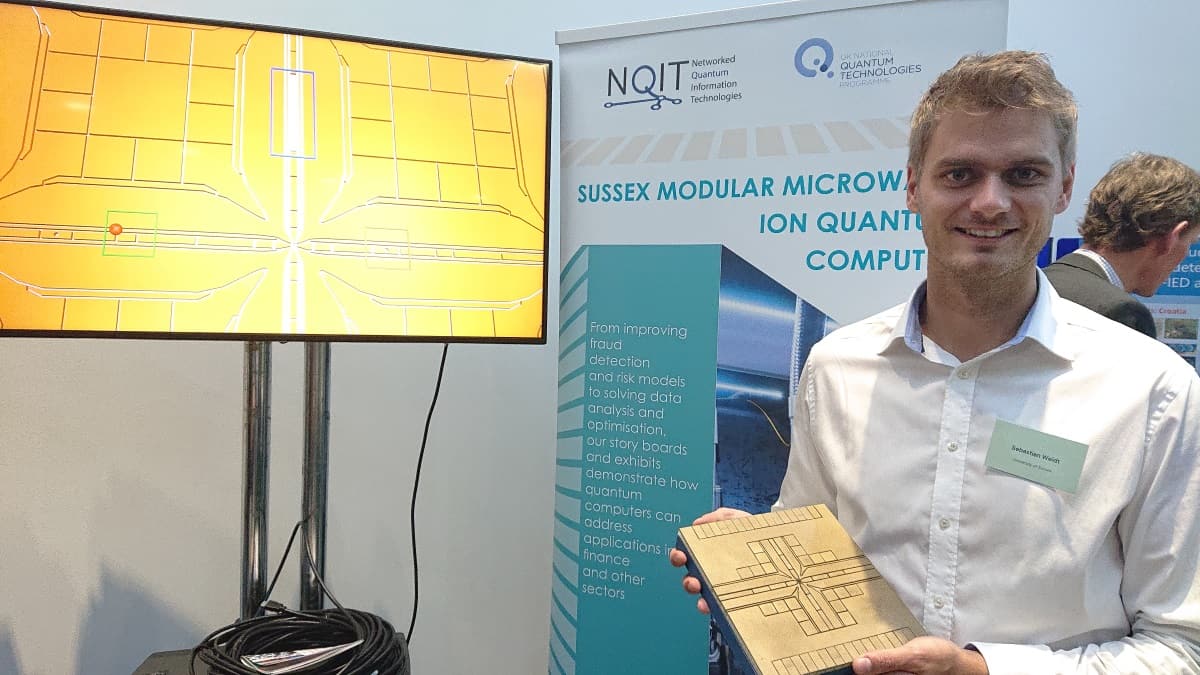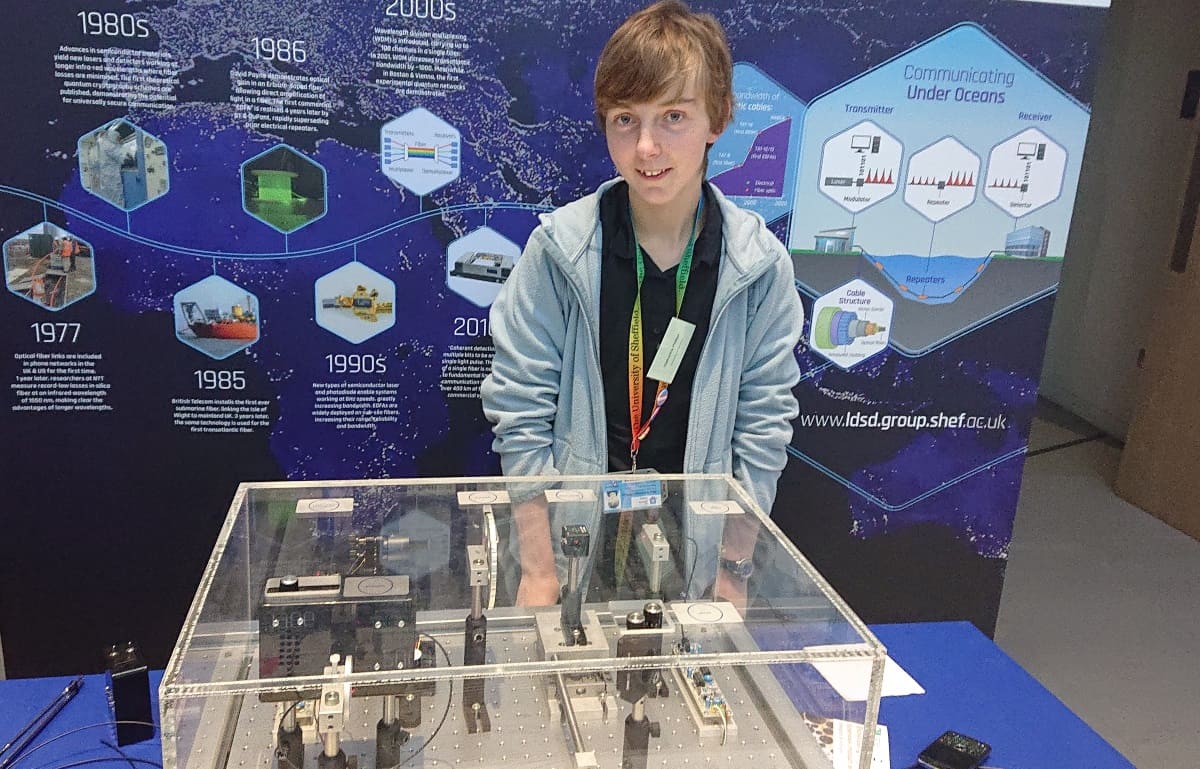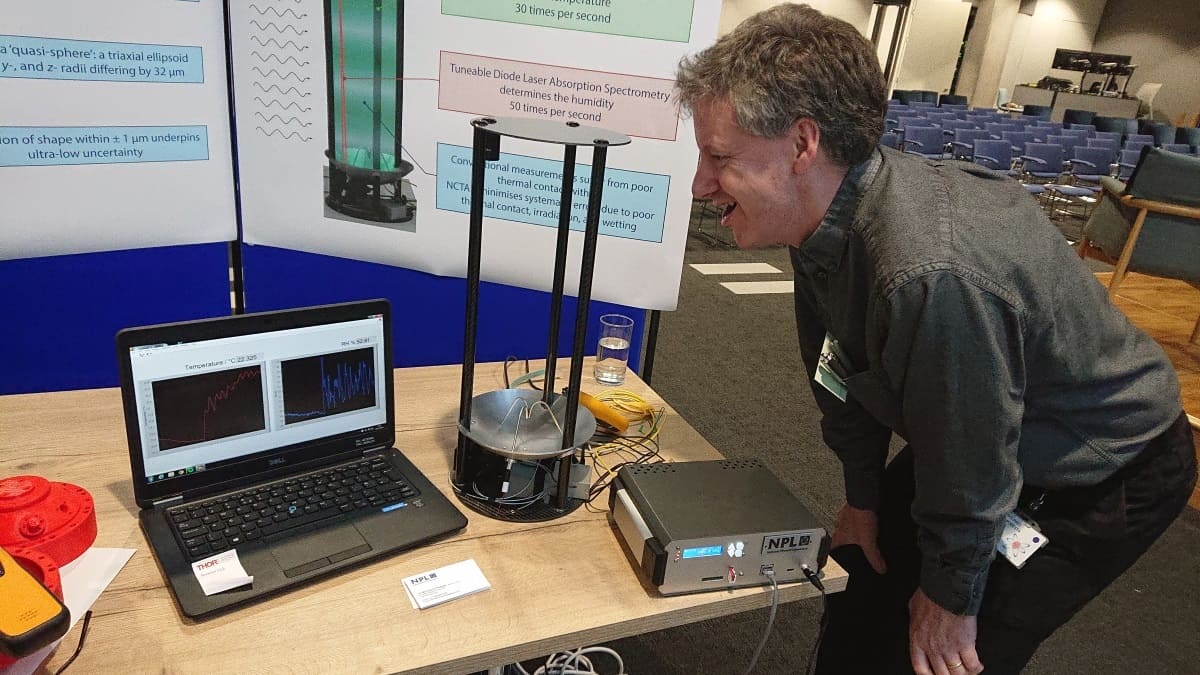Bragg diffraction monitors wound healing, plastic soil and other physical science innovations
by Hamish Johnston
On Friday I was at the Institute of Physics (IOP) in London for an event called “Showcasing Physical Sciences Impact”, which was organized by the UK’s Engineering and Physical Sciences Research Council (EPSRC), United Kingdom Research and Innovation (UKRI) and sponsored jointly by the IOP and the Royal Society of Chemistry.
There were a range of speakers from funding agencies such as UKRI, academia and industry, who talked about the far-reaching and varied impacts of physical sciences research.
I was particularly intrigued by a talk by the University of Sheffield chemist Tony Ryan, who goes by the moniker “Professor Plastic”. He spoke about his work on recycling and reusing plastics, including schemes for making plastic soils that can be used to grow plants in desert environments.
There was also a small exhibition of research projects from UK universities and I enjoyed having a chat with some of the exhibitors. Pictured above is Ruchi Gupta, who is a chemist at the University of Birmingham. Her research group has developed an optical biosensor that can be embedded in a wound dressing, and Gupta is holding a model of the layered structure.
Bragg reflector
Normally when a chronic wound such as a diabetic ulcer is dressed it cannot be inspected without removing the dressing – which can be painful and disrupt the healing process. Gupta’s biosensor allows doctors to determine whether a wound has become infected by revealing the presence of biomolecules that are associated with infection. This is done by embedding antibodies (shown in turquoise in the photo) in alternating layers of optical materials that form a Bragg reflector – which converts white light to monochromatic light of a certain colour.
When the biomolecules of interest bind to the antibodies, they change the colour of the reflected light – thereby revealing infection. As well as applications in healthcare, the technology could also be used other areas such as food security and environmental monitoring by using antibodies that capture different types of molecules.

I also had a chat with the physics Sebastian Weidt of the University of Sussex, who was exhibiting the “Sussex modular microwave ion quantum computer”. The device uses trapped ions as quantum bits (qubits), which are entangled and processed using microwaves. This, according to Weidt, offers a solution to the problem of scaling-up ion-based quantum computers, which would normally require impractically large numbers of laser beams.

Staying on the theme of quantum information, I also met Catherine Phillips at the University of Sheffield who had Alice, Bob and Eve in a plastic box. More precisely, she had a demonstration of how the principles of quantum mechanics could be used to prevent eavesdropper Eve from listening-in on a conversation between Alice and Bob.

In the above photo you can just make out several optically-levitated nanoparticles that are being held by green laser light in the middle of the cube-like structure at the centre of the image. This demonstration belongs to James Millen of King’s College London, who is developing ways of using trapped nano-objects as inertial sensors. As well as being sensitive to linear accelerations, trapped nanoparticles can also be made to rotate and could therefore be useful in detecting angular accelerations.

I just put on a jumper because I thought the office was getting a bit chilly, but then when I looked at a nearby thermometer it registered a balmy 25 °C. Perhaps we should invest in a new type of thermometer that has been developed by Michael de Podesta and colleagues at the UK’s National Physical Laboratory. That’s de Podesta in the above photo, blowing warm air into the device, which works out the temperature by measuring the speed of sound through the column of air between the two discs. If you look at the red plot on the laptop you can see a sudden jump in the temperature as his breath enters the column.